Carme Pinós. Escenarios para la vida
El título marca el camino y con él se presenta la última muestra del Museo ICO, en Madrid, dedicada a [...]
12 julio, 2016
por Pedro Hernández Martínez | Twitter: laperiferia | Instagram: laperiferia

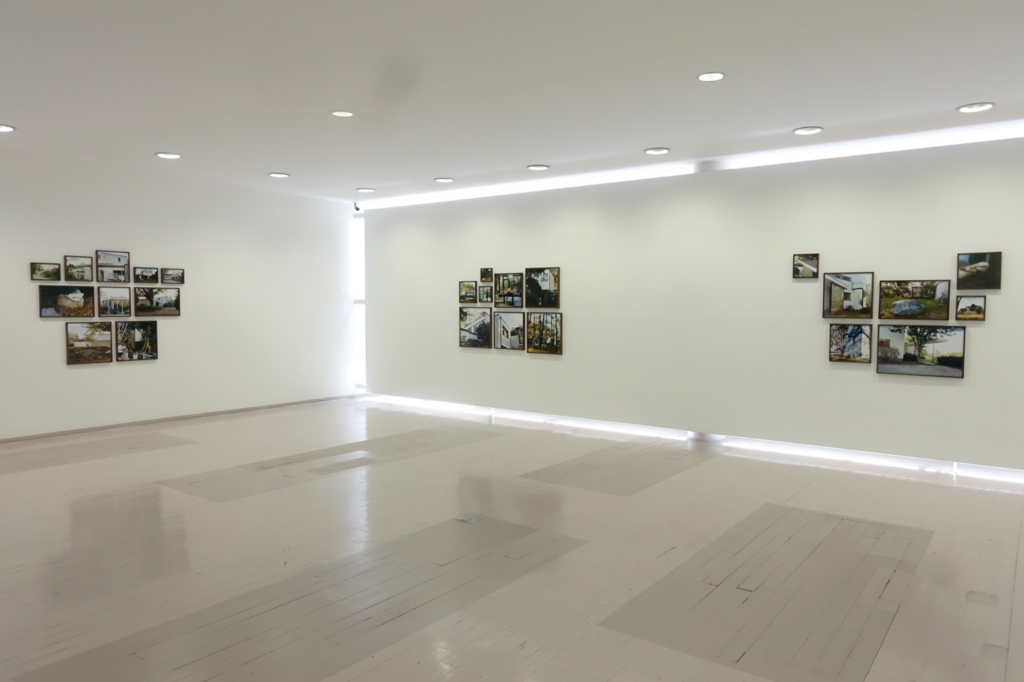 Lake Verea. “Modern Paparazza”, Proyecto Paralelo, 2016
Lake Verea. “Modern Paparazza”, Proyecto Paralelo, 2016
Modern Paparazza is a photographic investigation developed by the artist duo Lake Verea —Francisca Rivero-Lake Cortina and Carla Verea Hernandez— it tracks single-family houses of the great master of modern architecture. In their research they harness an intimate look, stealthy, secretive, looking to portray surprising details and unexpected content within their architecture.
Lake Verea (LV): We began to work on projects of Modernism more than 10 years ago, with an invitation to photograph and recognize the early works of Luis Barragán in Mexico City. It was a commission from Daniel Garza Usabiaga that was part of the exhibition Barragán in Context. After that we visited Guatemala to register the works of Carlos Merida, and the state of conservation of his murals, as a commission from Pablo Leon de la Barra, for the exhibition Incidents of travel. The turning point was when one of the works we found, a big mural, was behind a fence and inside of a private owned single-family house, Villa Dora. This is where Modern Paparazza is born, in the moment when we cannot access this particular house, and we have the audacity to jump on top of the car to photograph it from above the fence. This event woke-up in us the will to find the way to get closer to different houses.
We asked our self’s what had happened to the constructions of Masters Architects of the Bauhaus when, running away from the war they arrived to United States, a country where houses have no fences. Here we saw the need to narrow our search and put our attention in single-family houses, towards the Architecture made for one-self or for a specific client. Our first stop was New England, to the houses that Walter Gropius and Marcel Breuer built in 1937 for themselves, the same year they arrived to the United States.
Our first surprise was to realize that both houses share the same land. Later we learned that upon arrival to United States, a philanthropist named Helen Storrow lend them the land, close to Harvard University, and offered 18,000 dollars each, so that each could build their dream house. It is interesting to see the way in which they utilize the ground and the money. Each house is positioned in a strategic position within the terrain. Gropuis’s House, him being the master, takes the top part of the hill and Breuer the bottom. Both homes are surrounded by trees, creating a natural fence between interior and exterior. The obsession to integrate the house in the forest, that takes Gropius to build an exterior shower, see-throw porches, and other spaces that in winter could feel hostile. These details reflect their wish for freedom, nature, and the understanding of a new world as a new opportunity.
LV: It is also the dynamism of working with four cameras, different lenses and formats that we swap between us to change the inertia. This has to do with the need to do it quickly, but also with the urgency to follow the impulse that drives us. From here comes the importance of not repeating images that we considered “architectonic” and very important, never to redo images that have been made in the past. We approach the architecture as if undressing the house, going on top of ladders or picking through the windows. We like to pick and see their bowels and details. We are very interested in that moment where we understand houses as “living-beings”; remark what has been transformed through time and what has maintained. What happens when time goes by and history speaks. Where the windows crack, the materials change, the grass grows and the trees will never look the same as when it was first built. Our view is not a look of architecture photography, its an intimate look that recreates and interprets what emotionally attracts our attention. For us Modern Architecture is best understood as a drawing that takes a spatial form.
LV: From what we have read from the Bauhaus, Architecture as subject didn’t exist. What they learned was drawing, painting, furniture and lightning design and other practices related to space, but not architecture as such. For good or for bad, many of these architects where trained as engineers after all. Drawing lead them to the understanding of the houses in a delineated way. This is one of the principals that we want to emphasize, in our interpretation of each house, what we want to standout is the drawing. This is why lines and materials continue between one photo onto the next one. With the resulting photographic compositions, we want to understand a little more the house as a character. In the case of the Gropius House, a house built for himself, where he lives all of his life, we see the great Academic with the mission of teaching modernism to all corners of the world. He maintained an attitude towards his disciple Breuer of “me the master, you the genius”. Breuer, on the contrary, lived for a short term in the house he build in Lincoln. He was a character that moved constantly and wanted to grow as an Architect. In his house, we could get closer enough to see that the dinning room had water leaks. Reading in various documents we learned that this was one of his mayor frustrations, and as in today hasn’t been corrected. We don’t consider this a defect, more like reality, like a mole next to your mouth, such details become the essential characteristics of the houses.
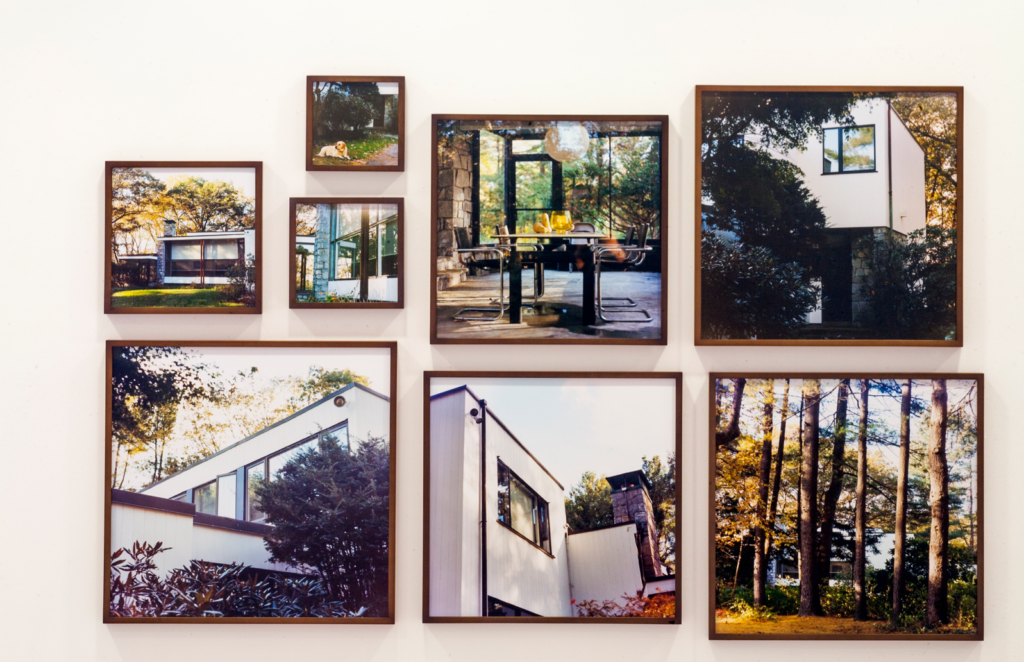 Breuer House I. Lake Verea. “Paparazza Moderna”, Proyecto Paralelo, 2016
Breuer House I. Lake Verea. “Paparazza Moderna”, Proyecto Paralelo, 2016
LV: This is the paparrazza attitude! It has to do with getting close and photograph the things that catch our attention. It doesn’t pretend to be biographical nor encyclopedic. It is experiential, voyeuristic. These concepts have to do with working agilely, following our impulse, searching for elements that are surprising to us. With this compositions we want to recreate a spacial experience, how we approach and how we ramble the house.
LV: In 1939, when teaching in Harvard, one of the their pupil asks them to build a house in the beach for his mother following the philosophy they where teaching: the Hagerty House. It is significant that a student was their first client in the United States. This speaks to us of the impact they made at university. They conceived the house as a photographic camera that would eat the sea. The house is quite controvertial and many things changed over time. At first they didn’t have the technical capacities to resolve the resistance of the glass windows against the strong sea winds and had to change them. Today happily, it has returned to its original state. We believe this has to do with a recent current of collecting modern houses and revalue something once thought lost. Subsequent to Hagerty House, they began to get commissions from interesting clients. Around 1939, there is an intriguing character that challenges them to design what would become Chamberlain Cottage. This Cottage is full of controversy and quite studied, it represents one of the most secretive yet the most talked about houses of modernity. It’s been studied as considerable influence of Farnsworth house by Mies Van der Rohe. It’s a tiny construction, made for a single man, without guest rooms, with one room. The only premise the client asks for is that no one could find it in the woods. When we travelled in search of this house, we went with the idea of meeting the great mystery of modernism. The first difficulty was to find the town’s new name, it changed from Middlesex to Sudbury. Once we got there, we found a small road, and started to walk. We found a couple of sigs with messages “no visitors allowed”, “visitors are not welcome”. Walking for quite some time, without being able to see the house we took photos of the forest with the confidence that the house was behind the trees. Time after we understood why we didn’t find it. It’s a 50 square meters construction in a 10 hectare terrain, perfectly hidden in the forest. This became a poetic search. We see the house as the client asked for, hidden inside thousands of trees for no one except him to see.
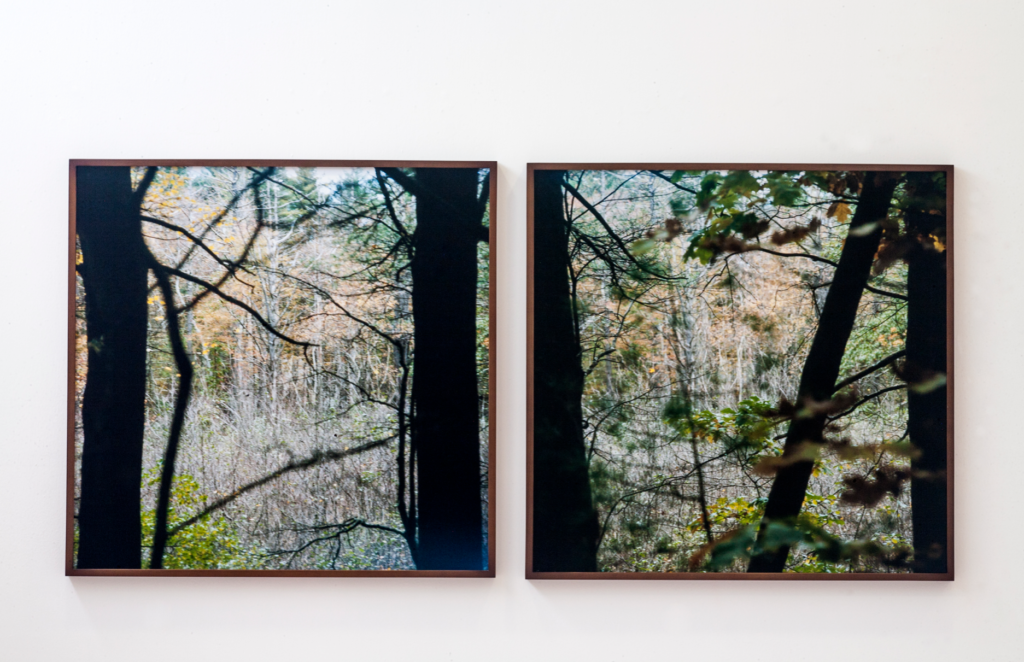 Chamberlain Cottage. Lake Verea. “Paparazza Moderna”, Proyecto Paralelo, 2016
Chamberlain Cottage. Lake Verea. “Paparazza Moderna”, Proyecto Paralelo, 2016
LV: In 1941 with another client: Doctor Virgil Abele. During the design of this house they are a couple of frictions between both architects, mostly because Gropius felt the need to impose distance to his pupil Breuer. There a couple of theories of which is the last house they build together. In any case, the state of conservancy of The Abele House is deplorable, it speaks to us that, more than a house this is a metaphor of life which permeates the building. For our project Modern Paparazzza this is the perfect example that gives us hints of interpretation. Do the owners know what they have? What attracted them to buy and live in a house like this? How did they find this house? It is fascinating that this is the house that breaks the duo apart, and that the state of preservation seems to reflect the breakup.
LV: We divided this investigation in three chapters, three architectural duos: Walter Gropius and Marcel Breuer in New England, Rudolf Schindler and Richard Neutra in California, Mies Van Der Rohe and Phillip Johnson, in various cities. It is also interesting to consider the importance of the big clients that gave them the possibility to create their ideas, that moment of opportunity where client and architect unite. Us being a creative duo we want to understand how this stories happened and the impossibility to divide the influence each had over the other.
LV: It always begins with the “ego” of “the sole-finger”. The question: Who did the photo? arises often. What does this have to do with that? We care for what we are seeing, who’s camera or who’s finger are the least important. This is why we setup games, so we don’t have this discussion. Erase the topic. What matters to us is the intention, the investigation, the result. We believe that each day we are less photographers and more of something else, we still don’t know what, but we are in the constant search.
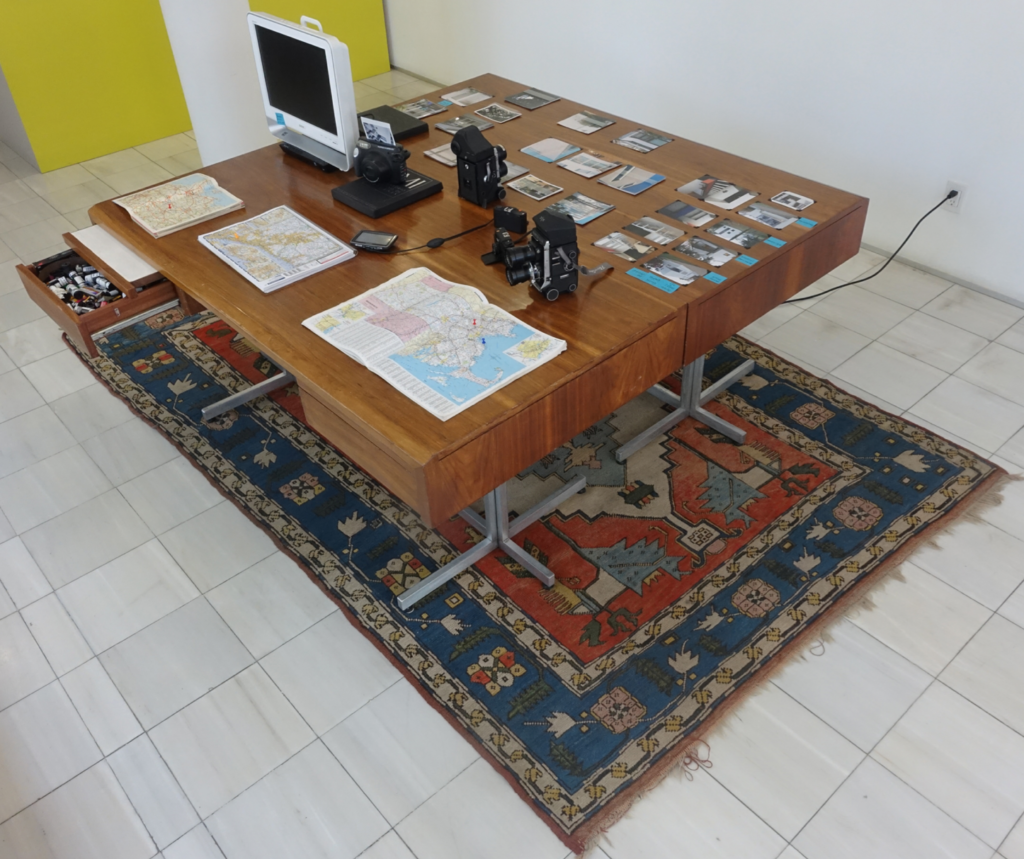 Lake Verea. “Paparazza Moderna”, Proyecto Paralelo, 2016
Lake Verea. “Paparazza Moderna”, Proyecto Paralelo, 2016
LV: The first thing that we are interested in talking about is our cameras. It is important to highlight analogue photography and this is why we display the cameras and analogue film. We also added notes on the maps and on “the live archive” that compiles images and texts from the Internet that we have been putting together for years. Our investigation ended and completed itself with the visit to Dessau, to the Bauhaus, to better know the source. There we got to see the first single-houses Gropius built for himself and the masters, just outside the Bauhaus main building. His house was destroyed by the Nazis yet in the recent years it has been reconstructed as volume, meaning, a drawing. And this is what made us understand everything.
LV: We are paparazzas, not academics. We are interested in the glance. We want to capture these characters from what people can tell us today about them. This is why it’s a “live archive” and changing. This is in part what keeps us wanting to learn more, to investigate a little further and to understand that something are forgotten and it is because of the interest of a new generation that they take a second life. At some point in history this houses where not valued and today thanks to the interest of other generation, they have a new opportunity. We see a generational interest to understand the international-style way of living, which is not exactly the one we are living in, but closer to that of the 19 century. Today it would be challenge to live in 50m2 houses like Chamberlain Cottage. This is precisely why these constructions are threatened, because of the discretion of their spaces. We wonder what will happen to Chamberlain Cottage when it sales? Maybe she will have the same destiny as the other Breuer’s houses that have been taken elsewhere changing location? Can it become a pavilion in a large garden? Or a little more like the Phillip Johnson’s Glass House, where you have the Glass House and then an old traditional house where they actually used to live.
LV: It never appears because it’s architecture is not of their interest. We think it is intriguing that many of us, from the same generation, are inspired by this movement. It moves us from different perspectives coming back to the origin by the reinterpretations of the same objects and lines.
LV: Yes ! Like toys or cars.
LV: We have seen houses full of Art works. A Phillip Johnson’s house was bought by an art collector and what he did was to make an exterior gallery to keep his collection, but this is another chapter of these series.
LV: Yes we do think and fell this too. Modernism is without a doubt an utopia, that like all of the utopias, is very desirable because of it’s many virtues, like: neatness, simplicity, economy and functionalism.
We look at our lives and it’s not like this. We are full of objects, gadgets become old very fast, clothing we don’t use, paintings that have been given as gifts. And when you turn and look at your life what you miss from utopia is cleanliness and simplicity.
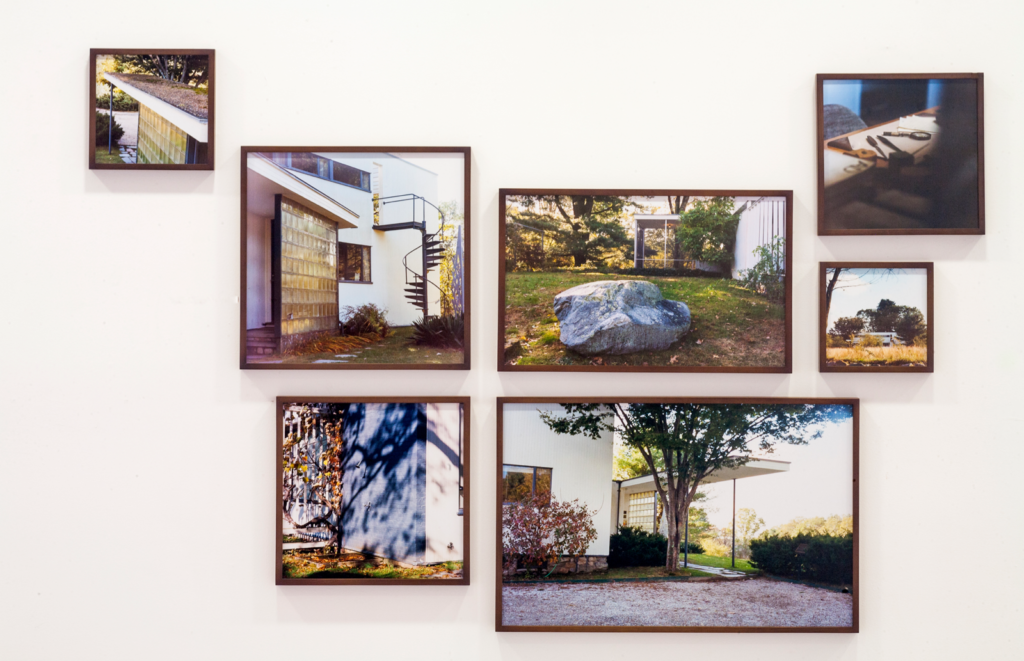 Gropius House. ˝ Lake Verea. “Paparazza Moderna”, Proyecto Paralelo, 2016
Gropius House. ˝ Lake Verea. “Paparazza Moderna”, Proyecto Paralelo, 2016
LV: It is interesting to think what these houses have that make them survive. Is the aura they radiate what keeps them from being destructed? The Abele House, beyond it’s deterioration, it’s lines are still gorgeous and super powerful. What did the present owners thought when they saw this house for the first time? Did they think the house was unfinished? That it was a warehouse? To us, this is a breakpoint. It becomes fascinating to understand the houses as living beings, like characters that have transformations, that are unique, and a destiny that is not in the hands of the architect that build it, or the client that commissioned it. It is compelling to think of this as an analogy of life itself. To each a unique destiny and only time will tell.
LV: These are the survivors; many stay on the way, just like humans.
LV: This interests us plenty. Before you see the site you make-up something in your mind. This is why we chose not to focus on books instead we crave for the excitement of the experience, getting to a place and what happens from here to there. We try never to make similar photos that are done already. This is not our intention or our quest.
LV: All of the houses we photographed, except for the Gropius House, which is a foundation, are privately owned. The things that the inhabitants of homes of the great masters, have an understanding of what Breuer used to say: “Modernism is not a style, but an attitude”. For example, the Hagerty House is a house we see constantly photographed in Instagram or in publications like Architectual Digest or others of “life style” magazines.
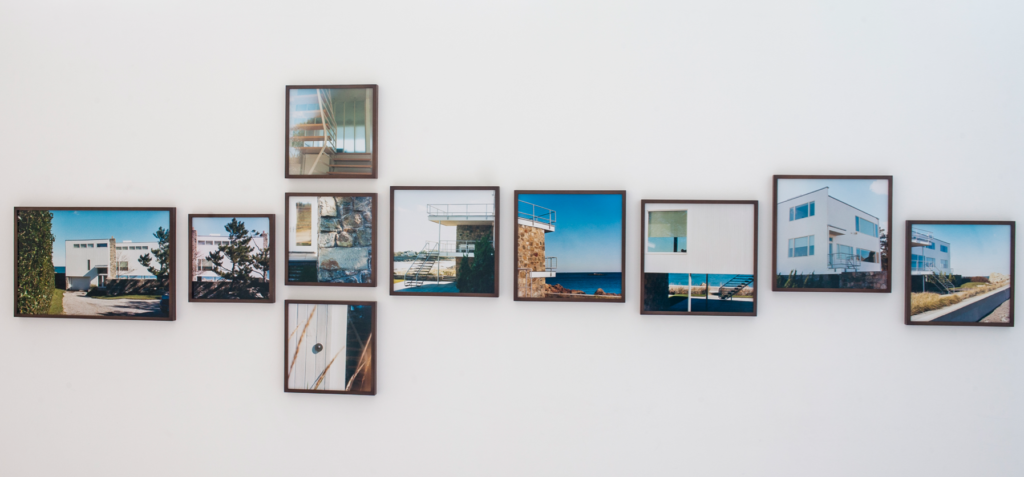 Hagerty House. Lake Verea. “Paparazza Moderna”, Proyecto Paralelo, 2016
Hagerty House. Lake Verea. “Paparazza Moderna”, Proyecto Paralelo, 2016
LV: Completely. The Vienna architect that went to California come from the first World War and had optimum conditions to design “clean” houses: climate, gardens and the landscape. California is a marvelous Modern trip. To understand California is to really understand the Modern lifestyle. Here houses evolve from being simple and functional to become sumptuous, ultra luxurious, Hollywood and money. Everything changed radically. This is very stimulating content of the second chapter or our research.
LV: Yes, Shulman at it’s best. It’s amazing what he photographed. We think that the photographers like Mexico’s Lola Alvarez Bravo, Salas Portugal, Zamora and the Americans (Shulman), made some images that are absolutely wonderful.
LV: To the extend of publications like Architectural Digest, that is a lifestyle+decoration magazine. Many of these houses are photographed by this magazine constantly, and usually they don’t speak about architecture, but focus on the furniture, how much they cost or what collector it belongs to. The interest changes a bit and it points our other scenarios.
LV: To have a Modern lifestyle. Just like when you read Colomina and her approach at the Eames and the work they did for exhibitions like Glimpses of the U.S.A, where their use of millions of photos was an excuse to sell American products to the Russians.
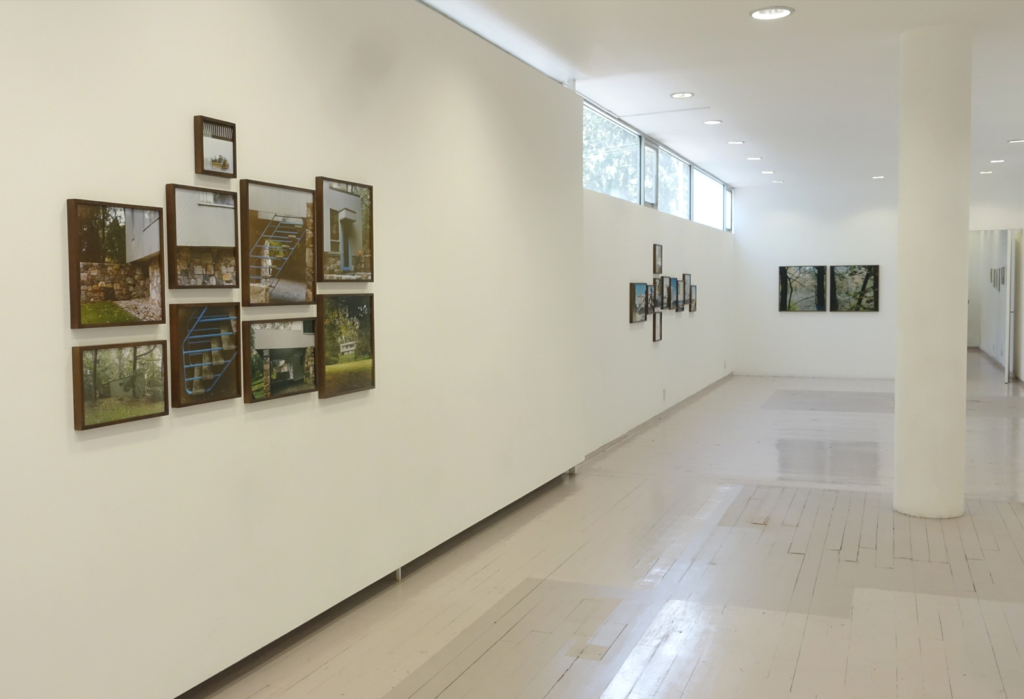 Lake Verea. “Paparazza Moderna”, Proyecto Paralelo, 2016
Lake Verea. “Paparazza Moderna”, Proyecto Paralelo, 2016
LV: Yes and also Instagram makes everything flat, don’t you think? So no need for details. You have a limit; you cannot zoom to see any detail at all.
LV: Instagram is a world with characteristics that are changing our lives, our worlds. The aspect that really interests us is that people freely add comments. A whole new universe in the hashtag that connects your through super-concrete concepts with people over the world. These connections are impressive, you meet people that comment on your images or writes private messages to you. A live story that is written in front of our eyes. Image and text act in parallel and sometimes a hashtag is more fulfilling than the image by itself. It is fascinating because of the economy of language as a direct conceptualization.
LV: Yes to measure and expand a specific subject. It is a very interesting world where we see how the old one fades in. We are frequently asked: aren’t you afraid of a world full of photographers?
LV: Giving to common people the opportunity to be documenter.
LV: We are interested in voyeurism, in those fine lines between public and private, as a comparison to the photos you are used to seeing in architectural books. People that you would never encounter any other way, all of these starts to enter your brain. It makes you rethink and you feel a bond even tough you have never meet them in person before.
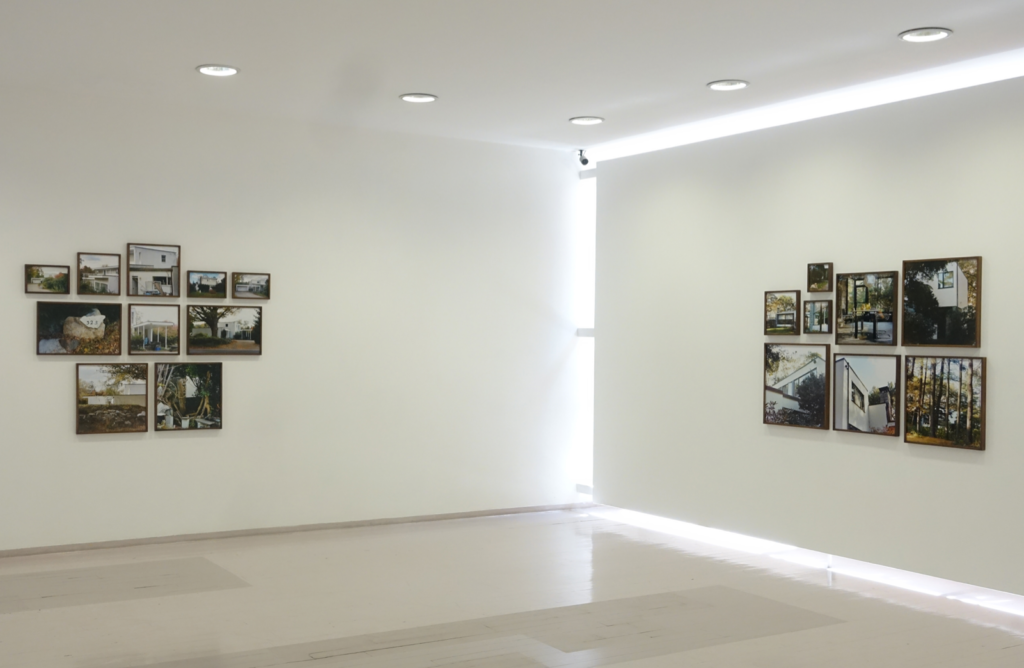 Lake Verea. “Paparazza Moderna”, Proyecto Paralelo, 2016
Lake Verea. “Paparazza Moderna”, Proyecto Paralelo, 2016
El título marca el camino y con él se presenta la última muestra del Museo ICO, en Madrid, dedicada a [...]
Antes de lanzar cualquier hipótesis sobre cuál es el futuro inmediato de los espacios de trabajo, cabe preguntarse: ¿son las [...]